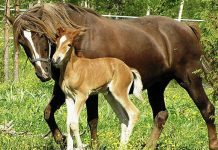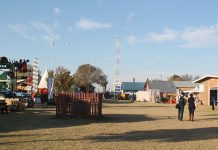A joint study by the Department of Food Science at the University of Stellenbosch and the Western Cape of Agriculture (WCDA) confirmed that carob pods are a viable alternative food source suitable for conditions in SA.
The carob tree, better known as St John’s bread, has a long history of use in food, and is even referred to in the Bible in the parable of the lost son (Luke 15:16). he carob study was conducted by Lukas Lipumbu, under the leadership of Dr Gunnar Sigge and Prof Trevor Britz from the Department of Food Science at the University of Stellenbosch, in partnership with Carel Muller and William Gertenbach of the WCDA, and a commercial farmer, Freddie Rust.
Very little is known about the nutritional composition and potential of locally produced carob. Carob trees have been used mainly ornamentally or as animal fodder in SA. Their pods have a nutty, chocolate-like flavour, but unlike chocolate or cocoa, don’t contain oxalic acid, which can be toxic when consumed in large quantities, or the stimulants caffeine or thiobromine.
As such, carob is often used as a cocoa replacement or extender. he study has shown that the nutritional value of SA-grown carob trees is comparable with trees in other countries. The five evaluated cultivars were found to be a good source of energy containing about 90% carbohydrates. S ucrose was found to be the dominant sugar (up to 45%), while glucose and fructose made up the remainder in similar proportions.
The high sugar content of up to 55% suggested a reduced need for additional sweeteners in carob foods. Cultivars contained up to 36% dietary fibre and 3% polyphenols, both of which have remarkable nutritional benefits. protein content was between 3% and 4% and of good quality, as seven essential amino acids were detected. The cultivars also had low fat and sodium content, making carob a healthy food source. In addition, the study found the cultivars had good proportions of long-chain fatty acids, based on the recommendations of international health organisations, in terms of the proportions of saturated to polyunsaturated fatty acids and omega-6 and omega-3 ratios.
Nine nutritionally important minerals – calcium, phosphorous, potassium, magnesium, sodium, manganese, iron, copper and zinc – were detected in the cultivars. Tasty treats A variety of food products targeted at various market sectors were also developed using carob as the main ingredient. Bread, porridge, breakfast cereal, mousse and milk-based drinks did the best in consumer sensory evaluations and were found safe in terms of food standards.
Production costs were also low. Lukas is excited about the results and hopes the products will become commercialised so SA can produce its own carob products instead of importing them at a high cost. Although several carob products are already produced in SA, all the carob powder used is imported, mostly from Spain. D r Muller adds that developing a market for carob products could provide farmers with a new alternative crop in the Western Cape.
The province has a Mediterranean climate in which carob trees thrive – cool, wet winters and dry, hot summers when the pods ripen. Muller feels the long-term viability of growing carob trees in the Swartland would have a better effect on the environment than growing grain crops. There are also very few production risks involved in growing these trees. Contact Dr Carel Muller on (021) 808 5228. |fw








